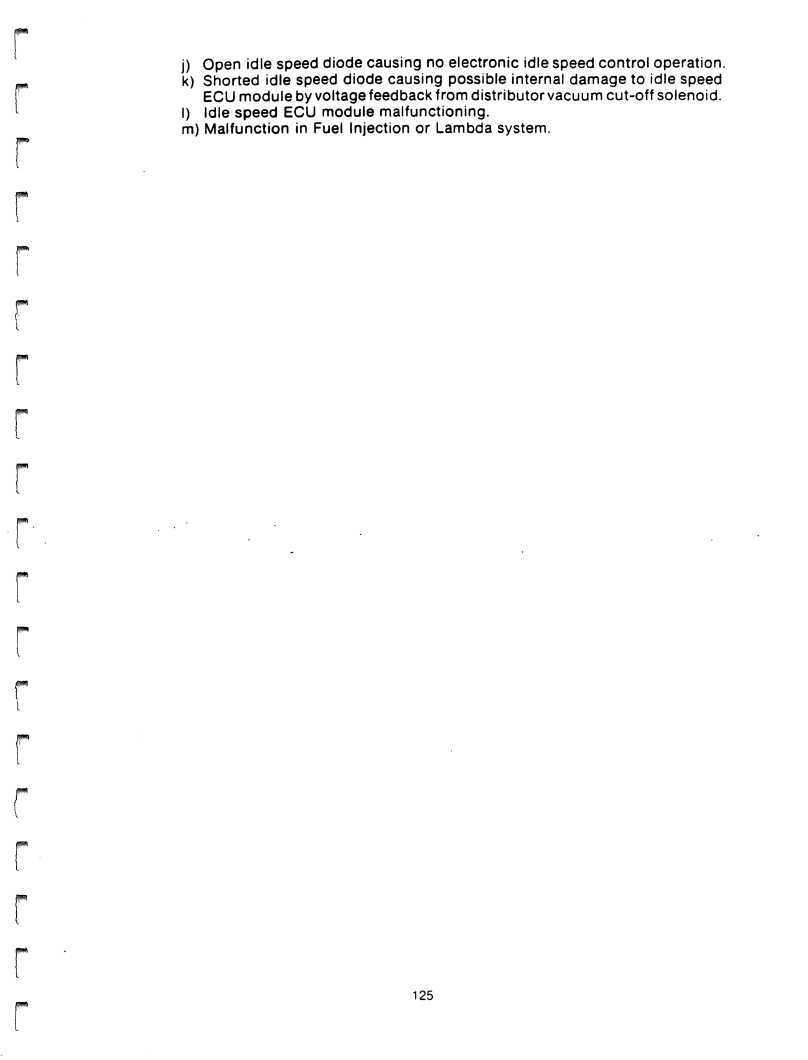
2 minute read
3. CO Emission
STEP 11: Check CO and dwell readings. The CO percentage should decrease and the dwell should be steady at a maximum of 20°. STEP 12: Reconnect the Lambda oxygen sensor wire. STEP 13: Check total CO reading. CO should drop below 1.0% and dwell reading should fluctuate between 35° to 45°.
NOTE: If CO does not drop below 1.0% raise engine speed to 1500 RPM. If CO now drops check for leaks in exhaust manifold or mixture control unit to inlet manifold gasket. STEP 14: Depress full-throttle microswitch with fingerto simulate full-throttle condition. The microswitch is located at the rear of the engine adjacent to the thermostat housing cover. STEP 15: Check CO and dwell readings. The CO percentage should increase and the dwell should be 50° to 60°. Release microswitch.
STEP 16: Remove exhaust gas probes and valve assembly, install exhaust pipe plugs, and disconnect dwell meter.
B2 - IDLE SPEED CONTROL OPERATION TEST
The curb idle speed on the De Lorean Sports Car is non-adjustable. The speed is electronically controlled by an ECU module which is preset internally and cannot be altered. The module is also designed with a variable range fast idle circuit which is *] activated by a thermistor when coolant temperature is below 15°C (59°F). As the ! coolant temperature decreases below 15° C the fast idle speed increased proportionally to compensate for the resistance within the engine due to cold temperature. m The purpose of this test procedure is to verify that idle speed control system operates with the engine at normal operating temperature. If the vehicle experiences a problem with the fast idle circuit it is necessary to perform a temperature-resistance test on the m thermistor. These specifications follow the procedure below. STEP 1: Connect tachometer to engine. STEP 2: Start engine and allow to warm up to normal operating temperature. Read ! engine idle RPM. Idle speed should be 775 RPM ± 50. STEP 3: Remove air cleaner and disconnect wire from idle speed microswitch. | STEP 4: Read engine idle RPM. The RPM should increase. Reconnect microswitch

STEP 5: Stop engine. Install air cleaner and remove tachometer. If the vehicle failed any step in the above procedure there is a possible malfunctioning « component within the system. A list of items to check are as follows: : a) #1 fuse blown. b) Restricted air filter element. *•] c) Improper or no RPM pulse signal from coil terminal #1. ! d) Idle adjustment screw located on inlet manifold not completely closed. e) Vacuum leak at idle circuit by-pass pipe or hoses. ^ f) Idle speed regulator shorted or open. j g) Open circuit in thermister or wiring giving a fast idle condition at all engine coolant temperatures. h) Idle speed microswitch misadjusted or internally open. ! i) Throttle plates not completely closed at idle. '
j) Open idle speed diode causing no electronic idle speed control operation. — k) Shorted idle speed diode causing possible internal damage to idle speed ECU module by voltage feedback from distributor vacuum cut-off solenoid. I) Idle speed ECU module malfunctioning, m) Malfunction in Fuel Injection or Lambda system.











